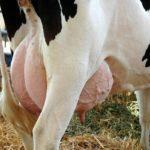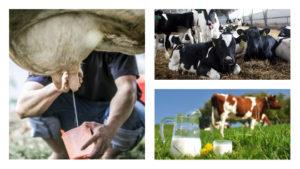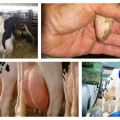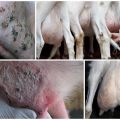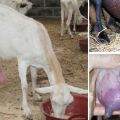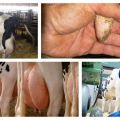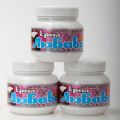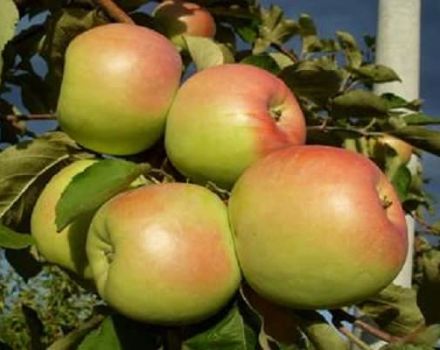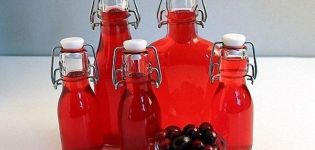What udder shapes do cows have and how many nipples they have, organ anatomy
Experienced farmers check how many teats a cow has before purchasing a cow for milk production. Experts pay attention to the appearance of the udder and the method of attachment. Having a large udder does not guarantee high yields. The choice of a reliable supplier of animals that guarantees a good heredity of cows is of great importance. After all, the further fate of the livestock farm depends on this.
Cow udder shape
The udder of cattle is found in the groin area. It includes two abdominal lobes, two femoral lobes. Correct livestock management, feeding, milking twice a day will increase milk production. The suitability of a cow for machine milking is determined by the type and size of the udder.
The size of the heifer mammary glands increases by 2 months of lactation. Over time, they decrease, productivity becomes less. The size of the udder increases, the shape is formed by the seventh lactation. By the time of aging, the udder wilts.
The following types of udders are distinguished in cattle:
- The tub is ovoid, wide, deep and elongated.
- The bowl is characterized by an oval shape and a large volume.
- The funnel is rounded and tapers towards the bottom. The mammary glands are located close to each other.
- The goat is characterized by underdeveloped abdominal lobes, the posterior lobes droop.
- The primitive has the shape of a hemisphere and large nipples. The primitive form indicates insufficient animal care.
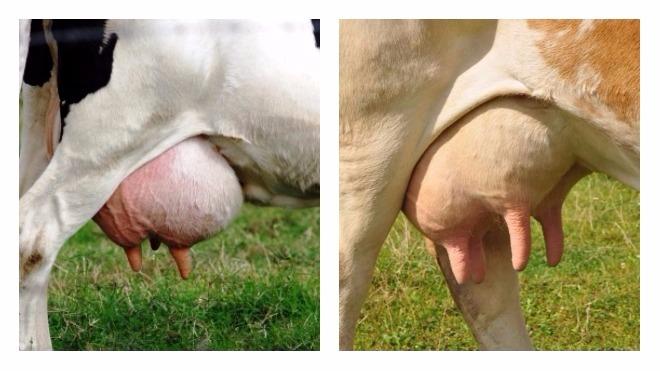
How many nipples does a cow have
The number of teats per udder does not affect the hand milking process. This question arises when using a milking machine. The device contains four cups, so a third pair of nipples will be superfluous. The correct animal structure includes 4 teats. The presence of accessory organs or an insufficient number of them is not uncommon. A well-developed udder contains 5 teats or more. The glands may be fully functional or underdeveloped. A cow with three teats is considered abnormal and makes milking difficult.
Having extra boobs was thought to be a sign of a dairy cow. But experienced growers say this leads to the development of mastitis. Sometimes the main nipples grow together with the accessory ones, the appendix cistern narrows, and milk flow is difficult.
Accessory organs are a hereditary trait, transmitted through the maternal and paternal lines. Before purchasing a cow, a thorough examination should be done for additional scions.Reliable livestock producers offer flawless animals.
Determination of capacity
Milk in the mammary glands is produced continuously and excreted during milking or feeding the calf. After filling the alveoli and small ducts, milk secretion accumulates in the cistern. Intra-udder pressure affects the capacitance of the udder. The tone of the walls and the amount of milk depend on the pressure.
When the pressure in the capillaries is compared with the intrauterine pressure, the process of milk formation stops.
Highly productive cows, 12 hours after milking, fill the storage tanks to 90%. The large organ allows you to increase the time between milkings without reducing the amount of milk produced. The maximum one-time milk yield depends on the capacity of the tanks and the age of the cow. The capacity is determined according to the following table:
| Indicators | Cow age (lactation) | ||
| 1 | 2 | 3 or more | |
| Daily milk yield, kg | 15,0 | 21,66 | 23,64 |
| Tank capacity, kg | 8,71 | 12,27 | 13,74 |
| Tank filling (%) | 56-58 | 56-57 | 58-59 |
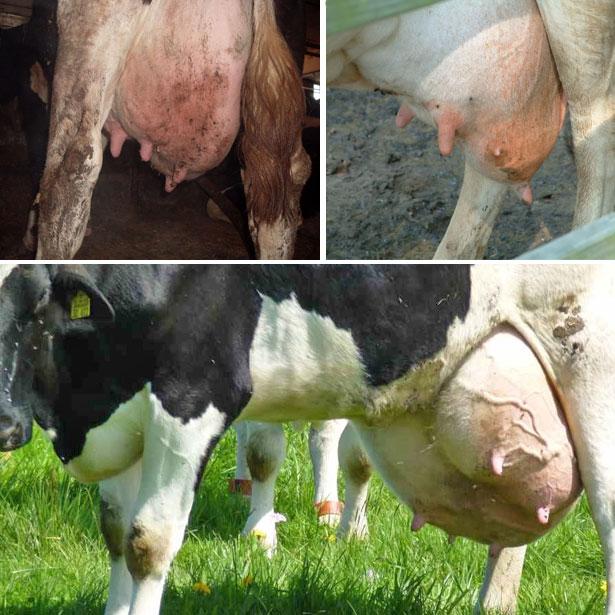
With frequent stimulation of the nipples, oxytocin is produced, the pituitary gland is stimulated, hormones are released that trigger the milk formation process. Correct feeding with three milking increases milk yield:
| Daily milk yield, kg | Milk increase,% |
| 10 | 3-5 |
| 15-20 | 7-8 |
| 25-30 | 20-30 |
Most desirable udder shape
When choosing a cow, a thorough examination of the udder takes place. The goat form does not give high yields. The milking machine does not match it, and manual milking is difficult. Cows with an underdeveloped or primitive look are also not suitable for milk production. In a funnel-shaped form, the milk is not evenly distributed among the portions, which makes milking difficult.
Bath and bowl shapes are preferred. These forms have capacious tanks, have good capacity, and are suitable for machine and hand milking. The cup-shaped lobes are evenly filled with milk, and the udder is comfortably placed on the belly.


